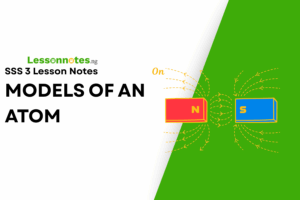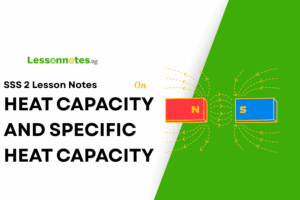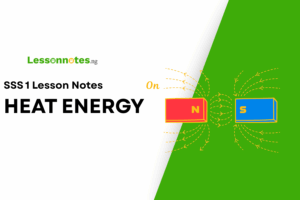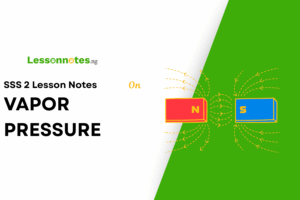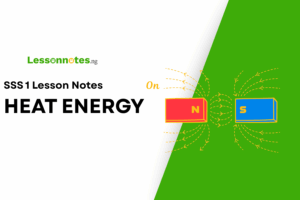Latent Heat SS2 Physics Lesson Note
Download Lesson NoteTopic: Latent Heat
Sometimes when heat energy is given to a substance, it does not increase its temperature, rather, it changes the state of the substance; such heat is referred to as latent heat. There are two types of latent heat:
- Latent heat of fusion
- Latent heat of vaporization
LATENT HEAT OF FUSION
The latent heat of fusion is the quantity of energy needed to change solid to liquid without any temperature change.
LATENT HEAT OF VAPORIZATION
This is the amount of energy needed to change liquid to gasses (vapor) or steam at a constant temperature.
SPECIFIC LATENT HEAT
This is the quantity of heat required to change a unit mass of a substance from one state to another without a change in its temperature.
- Specific Latent Heat Of Fusion (Lf)
This is the quantity of heat required to change a unit mass of a solid to liquid without a change in its temperature. The specific latent heat of fusion of ice is 33600 J/kg.
Q = MIf ……1
2. Specific Latent Heat Of Evaporation (Lv)
This is the quantity of heat required to convert a unit mass of liquid to vapour (gaseous state) without any temperature change. For water, the value is 2.26 x 106 J/kg
Q = MIv ……2
EXAMPLE
- How much heat energy is needed to change 3g of ice at 0°C to steam at 100°C? (Lf = 336 KJ/kg, Cw = 4200 J/kgk, Lv = 2.26 x 106 J/kg
First stage:
The heat required for the ice to melt at 0°C
Q1 = MIf
Q1 = 0.003 × 33600
Second Stage:
Heat required to raise the temperature of the melted ice from 0°C to 100°C
Q2 = MC∆θ
Q2 = 0.003 × 4200 × 100
Third Stage:
Heat is required to convert the liquid to steam
Q3 = MIv
Q3 = 0.003 × 2260000
The total energy,
Q = Q1 + Q2 + Q3
Q = 0.003(336000 + 420000 + 2260000)
Q = 9048J




